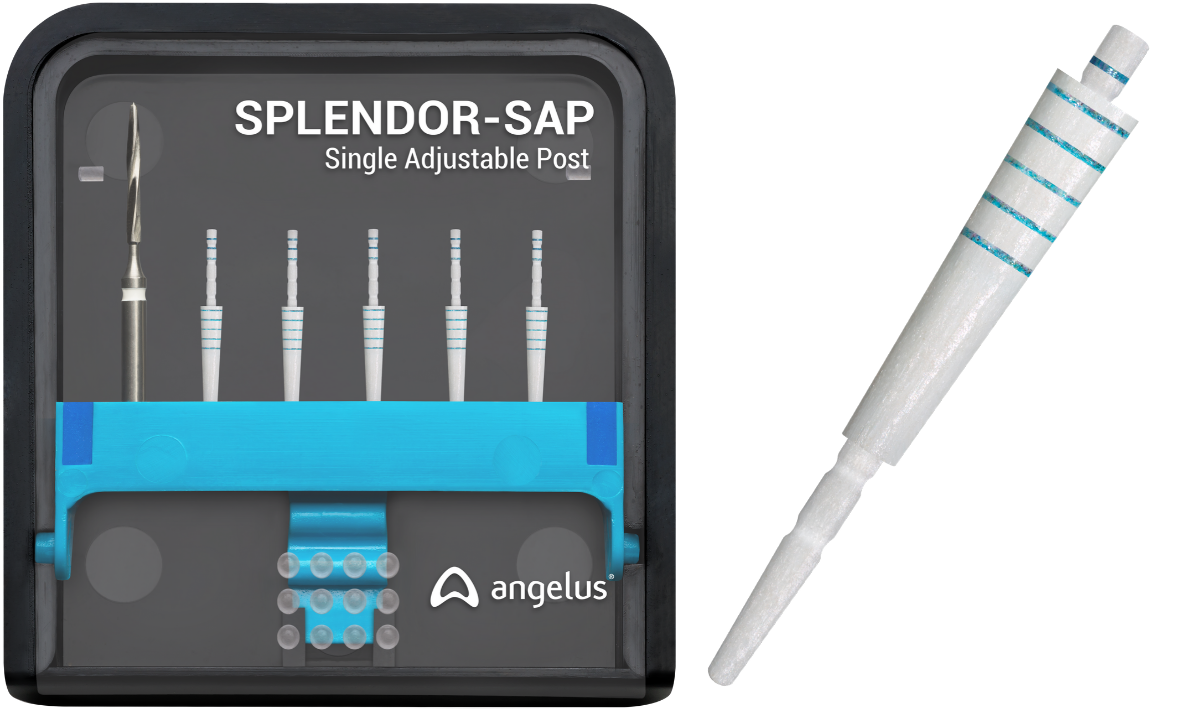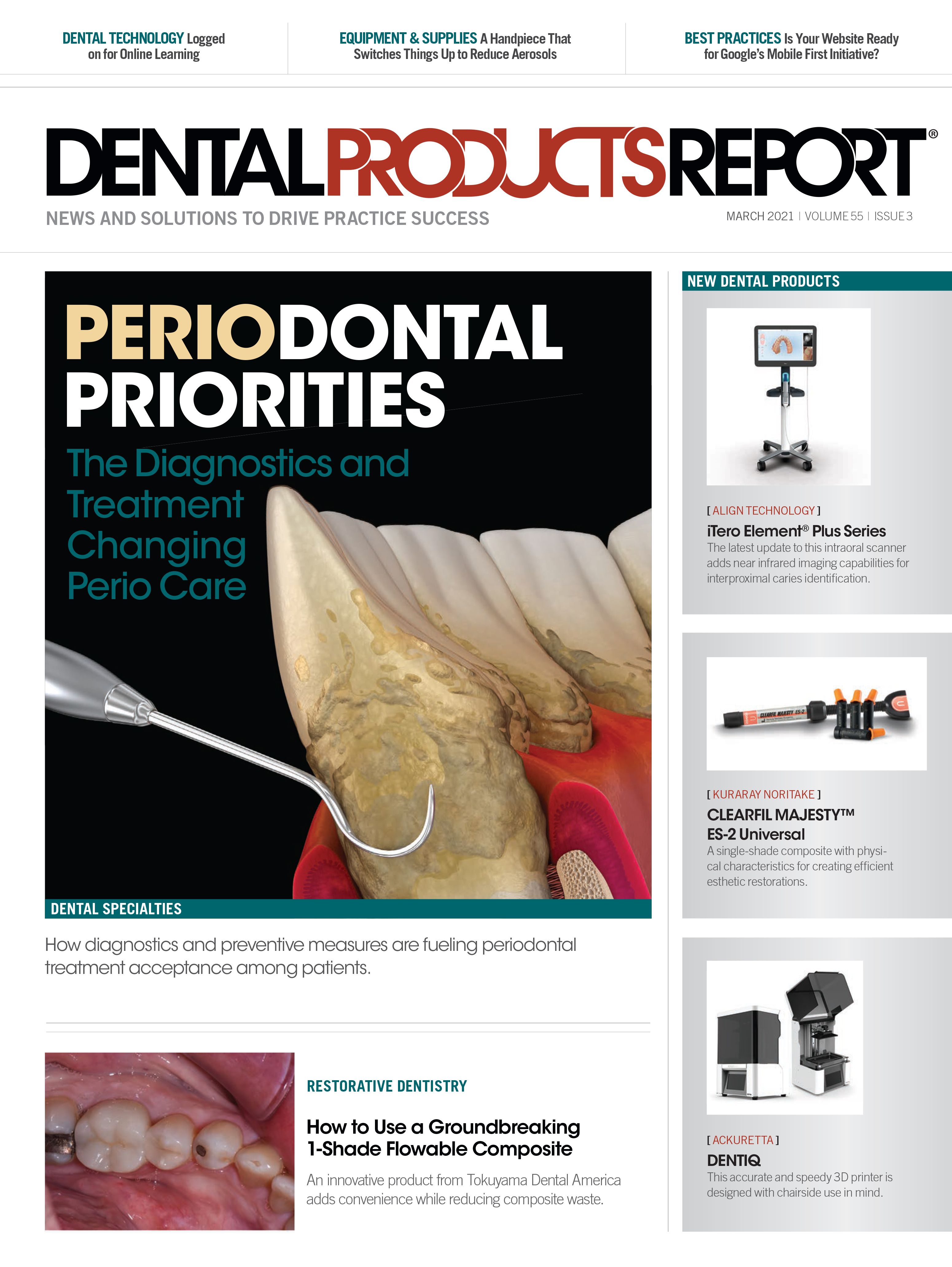Restoration of endodontically treated teeth frequently requires the replacement of lost tooth structure as well as support and retention of the restorative material. Through the years, many different types of endodontic posts have been used to serve this need.
Current endodontic trends are to use conservative access, shaping, and flaring during the preparation of the tooth. Removing minimal tooth structure allows increased fracture resistance, providing a better long-term prognosis.
Because teeth have varying pulpal canal diameters and shapes, various prefabricated post systems have been introduced to accommodate the differences in each clinical situation. This has led to systems of multiple diameters, as well as parallel versus tapered posts.
Endodontic posts have been fabricated from various materials including gold, stainless steel, zirconia, and fiber-reinforced composite. There are volumes of papers discussing the benefits of each. Fiber-reinforced composites have become the most popular option in America because of an elastic modulus similar to dentin, its ease of use, and the potential for the post material to bond to tooth structure.
Splendor–SAP (Single Adaptable Post)
Designed to let the clinician adapt the fiber post to the canal flare with a vertically sliding (adjustable) conical sleeve. The sleeve is made of the same fiber-reinforced composite as the post and, when needed, slides on when the post is inserted, converting a pointed, parallel post into a custom-fitted post. Replacing cement with material of high mechanical properties increases the overall strength of the post/core.
Angelus Dental
855-FIND MTA
angelusdental.com
The Product
Angelus recently brought the Splendor-SAP endodontic post system to the US. This system is a unique solution to challenges in current endodontic post kits. SAP stands for single adjustable post. It is created by using a 2-part system. The first part is a narrow, apically tapered fiber post like many other posts on the market. The second part makes this product unique. A sleeve provided with the posts and made of the same material can be placed over the post to allow for adaptation to varying diameters of coronal canal preparations (Figure 1). This sleeve allows for better adaptation of the post system to the canal anatomy while increasing strength and retention. This ingenious design leads to a significant decrease in the inventory of post designs, sizes, and systems needed by the clinician.
The Evaluation
The Catapult Education evaluators participated in the review of the post system in the first half of 2020. Each evaluator was provided with a Splendor-SAP kit that contained 5 posts and sleeves. Upon completion of the evaluation each doctor submitted a survey about their experiences with and opinions of the post system. There was no compensation to the evaluators for their participation in the review.
Evaluation Summary
Within our evaluation team, ¾ currently place fiber posts, whereas the other ¼ place metal posts. Half of our evaluators performed endodontic treatment in their practices. Most of our evaluators cited flexural strength (associated with decreased likelihood of root fracture), ability to bond, and esthetics as primary reasons for choosing fiber posts.
When using the SAP system with the sleeve, most of our evaluators ranked the fit as good or excellent. When the system was used without the post (for narrow canals that did not require the use of the sleeve) our evaluators again rated the fit as good or excellent.
Half of our reviewers ranked the system as better than their current post system. Of the rest, all but 1 rated the SAP post system as “good as” their current system. Only 1 of our evaluation team rated their current post system as better than the SAP post.
Comments from evaluators included the following:
“Simple to use and simplifies my procedures.”
“Like the novel idea of the sleeve.”
“Like having a universal size that can be used in a majority of cases.”
In general, our team was impressed with this unique and innovative clinical solution.
Case Study
An endodontically treated tooth #21 presents with minimal coronal tooth structure and requires a post and core along with a full coverage crown to restore to function.
Using the drill provided with the Splendor-SAP kit, the endodontic filling material is removed as apically as possible without removing excess existing tooth structure.
The SAP post and sleeve are tried into place (Figure 2) and excess is removed with a diamond bur and tried to place again (Figure 3). The post and sleeve are treated as per manufacturer instructions.
The post space and remaining tooth structure are conditioned with a phosphoric etch along with a compatible bonding agent. For the cement, the author likes to use a dual cure composite resin buildup material (LuxaCore Z; DMG America) as the luting agent. The core material is injected into the post space. The post and sleeve are then inserted into the canal. Holding the post to place, the area is light cured for 30 seconds. Then the core material is injected around the visible post to create the core. This is then light cured for another 30 seconds, followed immediately by the final preparation (Figure 4).
A final radiograph demonstrates the conservative post placement that is now bonded to the tooth with the development of an adequate clinical crown to support the final restoration (Figure 5).
The author would like to thank Dan Ward, DDS, fellow Catapult Education evaluator, for sharing his photography of this case. Our Catapult Evaluation team was impressed with this product and is pleased to give it the Catapult Vote of Confidence.
About Catapult
Catapult is an organization that consists of more than 50 clinicians spread throughout Canada and the United States. As a company, manufacturers pay a fee for their product to be evaluated and what we deliver are truthful, independent answers from surveys that we develop with them. We have had many products that have either had to be altered before hitting the market or simply never arrived because of our openly honest evaluations. In this way, Catapult assists the manufacturer to avoid potentially releasing a faulty product, or simply a product that needs refinement. Lastly our clients are omnipresent in the industry, small to large, no favoritism, simply reviewing the latest products in our practices.

